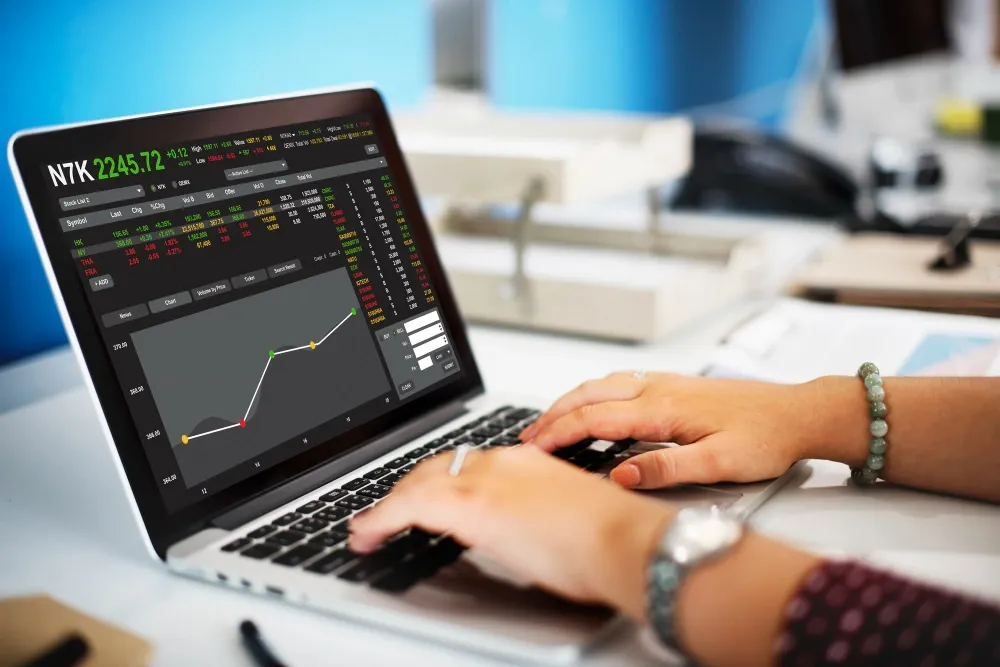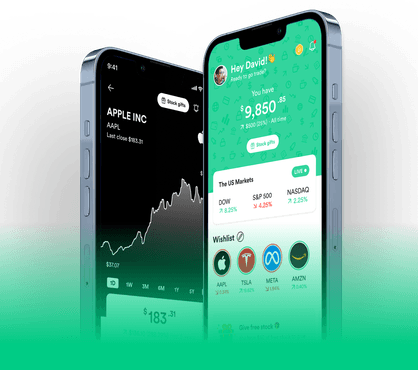For long-term investors, Exchange-Traded Funds (ETFs) and index funds are two of the most reliable ways to grow wealth. Both offer diversification and low fees, but they work differently.
ETFs trade like stocks, while index funds function like mutual funds. Understanding how each works can help you choose the best fit for your investing style.
What Is an ETF?
An ETF is a basket of assets — usually stocks, bonds, or commodities — designed to mirror the performance of a specific index such as the S&P 500 or Nasdaq-100.
ETFs trade on exchanges throughout the day at market prices. This means you can buy or sell them any time the market is open.
Examples:
- SPDR S&P 500 ETF (SPY): Tracks the 500 largest U.S. companies.
- Invesco QQQ: Follows the Nasdaq-100, dominated by major tech stocks.
ETFs are known for their flexibility, transparency, and tax efficiency.
What Is an Index Fund?
An index fund is a mutual fund that tracks a specific market index. Unlike ETFs, you can only buy or sell shares once per day — after the market closes — at the fund’s Net Asset Value (NAV).
Examples:
- Vanguard 500 Index Fund (VFIAX) tracks the S&P 500.
- Schwab Total Stock Market Index Fund (SWTSX) covers the entire U.S. market.
Index funds are simple, automated, and ideal for investors focused on long-term growth rather than daily trading.
Key Differences: ETF vs Index Fund
| Feature | ETF | Index Fund |
|---|---|---|
| Trading | Trades intraday on exchanges | Traded once daily at NAV |
| Pricing | Market-driven, fluctuates in real time | Set after market close |
| Minimum Investment | Starts from a few dollars (fractional shares) | Often $1,000 + |
| Fees | Very low expense ratios | Slightly higher costs |
| Tax Efficiency | More tax-efficient | Less tax-efficient |
| Best For | Active or flexible investors | Long-term, hands-off investors |
In short, ETFs give you flexibility, while index funds offer simplicity.
Pros and Cons of ETFs
Pros
- Real-time trading: Buy or sell anytime during market hours.
- Low cost: Expense ratios often below 0.1 %.
- Tax benefits: Efficient structure reduces capital gains.
- Wide access: Available for almost every sector and region.
Cons
- Emotional trading: Easy access can tempt overtrading.
- Slight price deviation: May trade above or below NAV.
- Brokerage fees: Some platforms charge small commissions.
Pros and Cons of Index Funds
Pros
- Simplicity: Perfect for automatic monthly investing.
- No intraday swings: Trades once daily at NAV.
- Great for retirement accounts: Especially IRAs or 401(k)s.
Cons
- Less flexible: Can’t trade intraday.
- Higher minimums: Some require larger upfront capital.
- Tax impact: Internal sales can trigger taxable gains.
Which Fits Your Long-Term Strategy?
Choosing between ETFs and index funds depends on your style and goals.
Choose ETFs if you want:
- Flexibility to trade anytime.
- Exposure to global or thematic sectors like AI or clean energy.
- Lower fees and real-time transparency.
- Fractional share investing starting from $1 on Gotrade.
Choose index funds if you prefer:
- A hands-off, automated approach.
- Simple recurring contributions.
- Long-term holdings for retirement.
Both are excellent for compounding wealth — the key is consistency and staying invested.
Can You Combine Both?
Yes. Many investors use both to balance control and convenience.
- Index funds for automatic monthly investing.
- ETFs for tactical exposure to specific markets or industries.
For instance, you might invest regularly in a total-market index fund while holding ETFs for tech or energy diversification. This hybrid strategy blends discipline with flexibility.
Common Mistakes to Avoid
- Overtrading ETFs: Treat them like long-term assets, not quick trades.
- Duplicating exposure: Don’t buy multiple funds tracking the same index.
- Ignoring expense ratios: Even small fees erode returns over decades.
- Timing the market: Focus on time in the market, not timing it.
ETF vs Index Fund: Tax Efficiency
ETFs generally win when it comes to taxes. Because of their “in-kind” creation and redemption process, ETFs rarely trigger capital-gains distributions.
Index funds, meanwhile, may incur taxable events when large investors redeem shares, forcing the fund to sell underlying assets.
For tax-advantaged accounts (like IRAs), the difference is minor, but in taxable accounts, ETFs can save money over time.
Cost Comparison Example
Let’s say you invest $10,000 for 20 years with an average annual return of 7 %.
- An ETF with a 0.05 % expense ratio would cost roughly $1,000 in fees.
- An index fund charging 0.15 % would cost about $3,000.
That 0.1 % difference might not sound like much, but over decades it can significantly impact your total gains.
Conclusion
Both ETFs and index funds are powerful tools for long-term investing.
- ETFs offer real-time trading, lower fees, and tax advantages.
- Index funds provide simplicity and automation — ideal for those who prefer a “set and forget” strategy.
The best choice depends on how hands-on you want to be. Some investors combine both for a balanced, diversified portfolio.
FAQ
1. Which is better for beginners — ETFs or index funds?
Both are excellent, but index funds suit beginners who prefer automation. ETFs offer more flexibility for active investors.
2. Are ETFs riskier than index funds?
Not inherently. Both track market indexes, but ETFs fluctuate intraday while index funds price once daily.
3. Can I own both?
Yes. Many investors hold both for diversification and balance.
4. Do ETFs pay dividends?
Most ETFs distribute dividends periodically, similar to index funds.
Disclaimer
Gotrade is the trading name of Gotrade Securities Inc., registered with and supervised by the Labuan Financial Services Authority (LFSA). This content is for educational purposes only and does not constitute financial advice. Always do your own research (DYOR) before investing.











